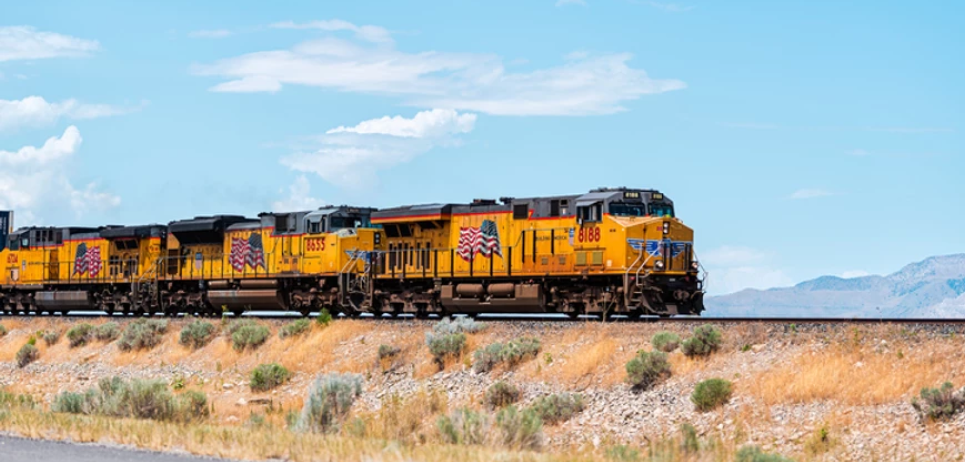QuayChain
- September 10, 2021
- 3 read
World-first supply-chain LTE/5G network builds visibility amid congestion melt
A new private LTE/5G network dedicated to the regional supply could chain build greater inland visibility and reduce pressure on logistics in ports and terminals.
FROM PORT TECHNOLOGY
10 September 2021
Jack Donnelly

A new private LTE/5G network dedicated to the regional supply could chain build greater inland visibility and reduce pressure on logistics in ports and terminals.
The Utah Inland Port Authority (UIPA) in August 2021 announced a partnership with QuayChain Technologies to operate what they describe as the world’s first private network to be used solely for the supply chain.
The network, which is already under development, aims to leverage the benefits of lower latency and enhanced connectivity capture increased levels of data in real-time and provide a stronger picture of end-to-end logistics.
Jack Hedge, Executive Director of UIPA, told PTI that port congestion is currently in the midst of a “meltdown” and digitisation of cargo flows could improve insights to remove bottlenecks in the supply chain.
The UIPA, which serves some of the world’s busiest ports currently – such as Los Angeles, Long Beach, and Oakland – is a critical lynchpin for transferring cargo in and out of inland markets.
Taking experience from a previous role at the Port of Los Angeles, Hedge noted that in working at the Utah inland authority, increased digitisation was necessary.
“Establishing the inland port authority here in Utah, and [assessing] the national system of logistics, we recognised that there was just as much or even more of a desire for technologically-advanced inland port terminal operation in Utah as there is in coastal ports,” Hedge explained.
The Network
A private LTE/5G network, provided by QuayChain working with infrastructure provider Nokia, was the option of choice for UIPA due to ultimate autonomy with the network itself.
Andrew Scott, founder at QuayChain, said a private network – as opposed to utilising existing commercial networks used in 5G projects seen at APMT Barcelona and elsewhere – centralises entire focus on just the supply chain actors in that region.
“Traditional network operators have to balance a lot of different needs and primarily driven by where their subscribers are, which leads to connectivity black holes,” he told PTI.
The devices Scott mentioned, including IoT-based sensors and gauges to chassis or rail movements, will benefit from the private network’s improved connectivity and resiliency, and provide a real-time picture of cargo flows.
Logistics operators in UIPA’s ecosystem – from anywhere ranging from seaport terminal operators at Long Beach, to freight forwarders inland – will now see every movement of cargo flow from vessel to inland markets.
“We are deploying devices with that allow us to capture the movement of equipment using Machine Learning/Artificial Intelligence and computer vision,” Scott noted.
“That information is shared with those that need it: when a container on a chassis leaves a terminal or leaves the rail station, the half a dozen or more people who need to know that can be told digitally in a secure manner.”
In addition to increased cargo visibility, a comprehensive ecosystem of logistics movements around the Utah region will allow UIPA to make smarter day-to-day decisions for customers using the port.
Scott explained, “Our goal is [to] enable more efficient queuing of trucks to ensure emissions are lower, for example, or how we make decisions around where do you put hydrogen refueling or Electric Vehicle (EV) refueling based on traffic patterns – improving day-to-day practical decisions.”
Scalability – and the inland port role
As peak season approaches, the priority for Hedge and UIPA is on supporting the seaport industries to continue to improve fluidity of cargo flows.
“We’re looking at how can we improve the fluidity of the rail network and our trucking partners here in Utah, to prepared for that surge of cargo that has already started coming in. This is not going to be a normal Christmas holiday rush,” Hedge outlined.
Ongoing delays outside major seaports mean that congestion “is going to be exacerbated,” and fluidity is a must.
It’s not just managing imports and sending the empty containers back to Asia: the sharp decline in availability of containers has meant that US exporters are unable to find a matched container to send to the coastal port areas and onto international customers, Hedge explained.
The new 5G network is planned to be rolled out to every UIPA facility in the logistics chain, and improved connectivity will also offer ‘sandbox’ potential for future automation and AI-based projects within the supply chain.
“This network provides a sandbox for us to trial new technologies in automation,” Hedge said.
The UIPA director explained that Utah’s tough terrain – with high altitudes, increased temperatures and extreme climate – can provide a dynamic environment for autonomous vehicles or electric-powered machinery and provide valuable insights.
“It is one thing to run a piece of equipment at sea level when it’s 75 degrees all of the time – it’s another thing to run a piece of equipment at 4,000 feet of elevation, hot summers and cold winters.
“We now have the network to support that. We’re excited about that aspect of it as well.”
10 September 2021
